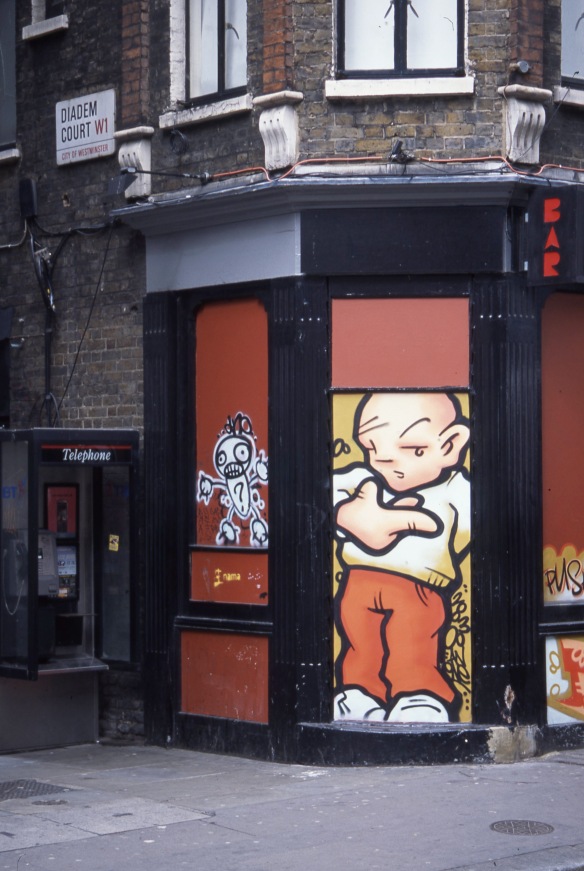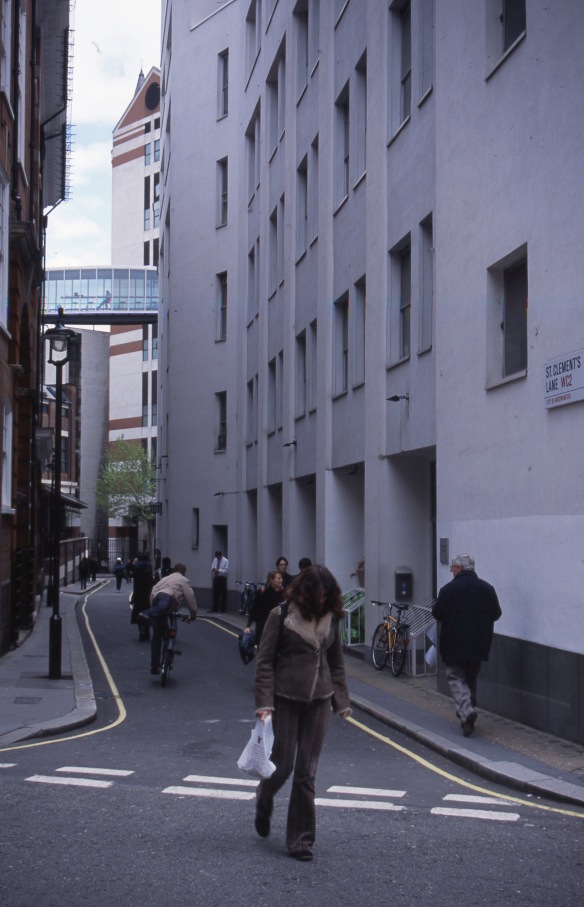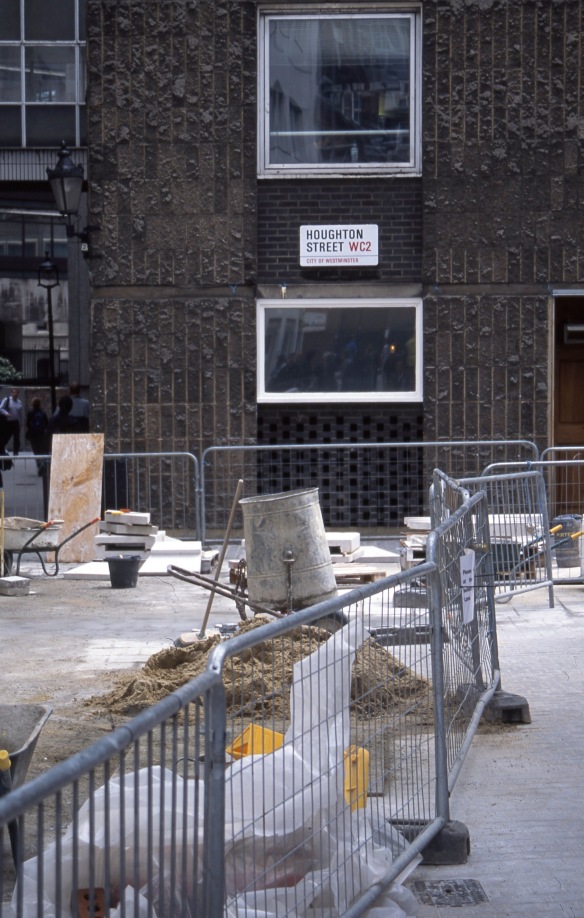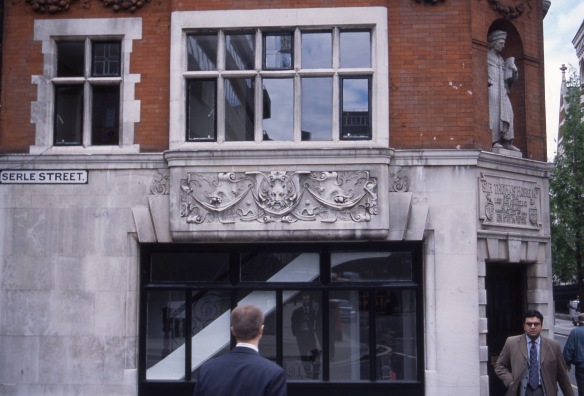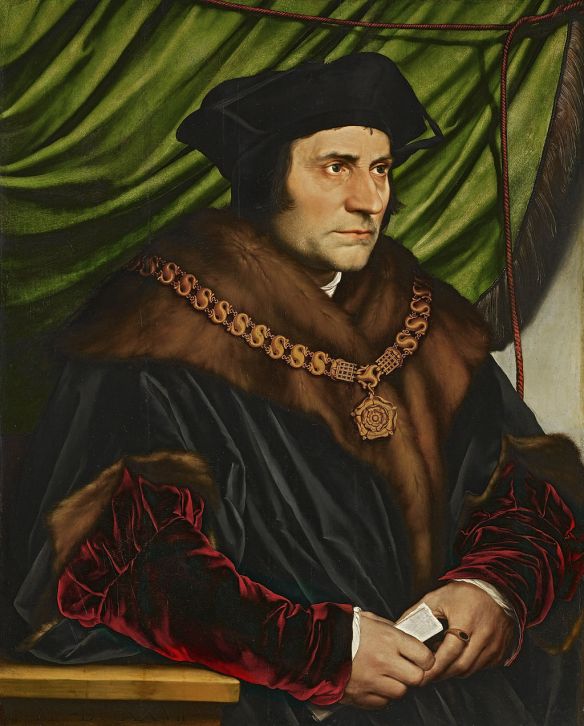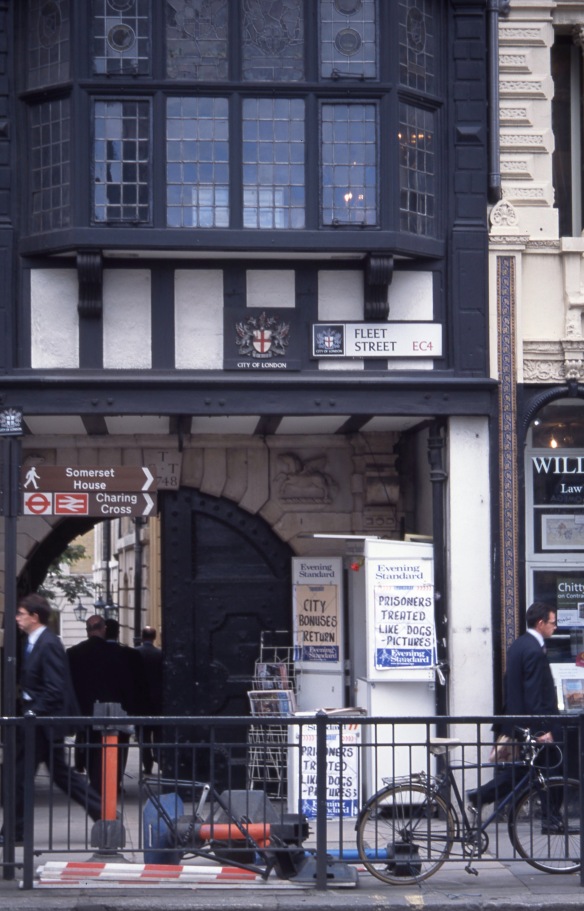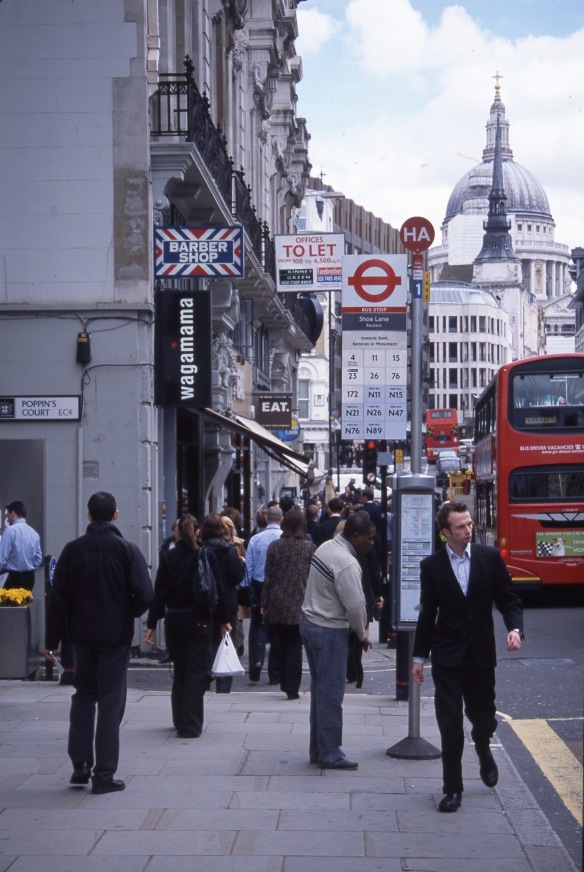This morning Aaron continued work on decorating the bathroom. He was somewhat hampered by finding a section of the previous paintwork peeling off plaster that had not been sealed before the pigment was applied.
I scanned another dozen colour slides from the Streets of London series produced in April 2004.
Between Oxford Street and Soho Square in the heart of the West End lies Diadem Court W1. This building on the corner has been enhanced by graffiti. The bar looked closed.
A little further East, off Shaftesbury Avenue, we come to Grape Street, beside the Shaftesbury Theatre where the musical Thoroughly Modern Millie was showing.
Centre Point, the 33 storey office tower block in the background, stands almost directly above Tottenham Court Road tube station. Built for developer Harry Hyams, as a speculative project, the building remained empty from its completion in 1966 until 1975, following the weekend occupation the previous year by a Direct Action housing group. This successfully highlighted the fact that the potential accommodation was being deliberately kept unoccupied while thousands were homeless. It has passed through several ownerships since, and is now used for both offices and residential apartments.
In Holborn, South of Lincoln’s Inn Fields, we come to St Clement’s Lane. I was intrigued by the gentleman seated in the glazed bridge in the middle distance. Space is at a premium, but is that really where he keeps his office?
In Houghton Street, WC2 the paving outside the London School of Economics was being refurbished.
The figure in the niche above this doorway in Serle Street, between Lincoln’s Inn Fields and Temple, is the Catholic Saint, Sir Thomas More, Lord Chancellor, beheaded by King Henry VIII’s executioner for refusing to take the Act of Supremacy in order to facilitate the sovereign’s divorce from his wife, Catherine of Aragon. The painting is by Hans Holbein the Younger. A copy of this, and another of St John Fisher, hung on the walls of the refectory of Wimbledon College, my Jesuit grammar school.
Bell Yard, WC2 is a little further South.
The Evening Standard placard announcing the return of City Bonuses in Fleet Street, preceded the 2008 crash by four fat years. I’m not sure how the prisoners were treated. Some dogs, of course, are treated better than humans.
Crane Court is off Fleet Street. The All Day Breakfast is now ubiquitous in London, but I doubt if this one
matches that of one off Poppin’s Court. At one time the excellent value cafes in London were the province of Italians, the older generation speaking halting English and the second generation being bilingual in Cockney and Italian. The Eastern Europeans have picked up that particular baton. One such hid around this corner. I often patronised it after a session at Portugal Prints.
Whitefriars Street also runs into Fleet Street. Sir Christopher Wren’s famous St Paul’s Cathedral can be seen in each of these last two pictures. This is what Wikipedia tells us about it:
‘St Paul’s Cathedral, London, is an Anglican cathedral, the seat of the Bishop of London and the mother church of the Diocese of London. It sits on Ludgate Hill at the highest point of the City of London. Its dedication to Paul the Apostle dates back to the original church on this site, founded in AD 604. The present church, dating from the late 17th century, was designed in the English Baroque style by Sir Christopher Wren. Its construction, completed in Wren’s lifetime, was part of a major rebuilding programme in the City after the Great Fire of London.
The cathedral is one of the most famous and most recognisable sights of London. Its dome, framed by the spires of Wren’s City churches, dominated the skyline for 300 years.[3] At 365 feet (111 m) high, it was the tallest building in London from 1710 to 1962. The dome is among the highest in the world. St Paul’s is the second largest church building in area in the United Kingdom after Liverpool Cathedral.
St Paul’s Cathedral occupies a significant place in the national identity. It is the central subject of much promotional material, as well as of images of the dome surrounded by the smoke and fire of the Blitz. Services held at St Paul’s have included the funerals of Lord Nelson, the Duke of Wellington and Sir Winston Churchill; Jubilee celebrations for Queen Victoria; peace services marking the end of the First and Second World Wars; the wedding of Charles, Prince of Wales and Lady Diana Spencer, the launch of the Festival of Britain and the thanksgiving services for the Golden Jubilee, the 80th Birthday and the Diamond Jubilee of Elizabeth II.’
Perhaps I should inform the website that it is also the cathedral in which my good friend, The Reverend Norman David Bird, was ordained almost thirty years ago.
Shoe and Bride Lanes, bring us nearer the River Thames. The latter features the transport of the modern London policeman. No set of London photographs should be devoid of scaffolding.
This evening we dined on chicken and bacon pasta bake; crisp carrots, green beans, and Brussels sprouts; and sautéed peppers and onions. I finished the malbec.
